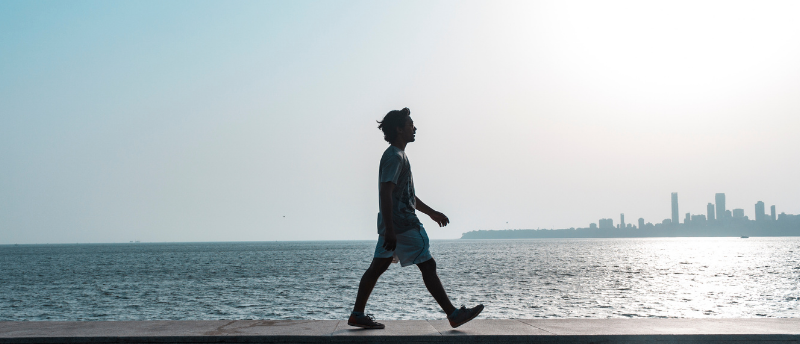Respect walks – they’re great for creativity!

Not just a pack of pathetic Peripatetics, those ancient Greeks were onto something when it came to creativity – and a researcher at Julius-Maximilians-Universität Würzburg (Bavaria, Germany) has the data to prove it.
Get up. Walk. Stop. Close this while you’re doing so and open it when you’re stationary again.* When you were on the move, did you start thinking about ideas you’ve been bouncing around, a project you’re working on, or a project that you want to start? The walking itself might have helped.
Actually, it turns out that walking isn’t strictly necessary. According to Barbara Händel of Julius-Maximilians-Universität Würzburg, unrestricted self-determined movement, in general, is great way to facilitate divergent thinking. Divergent thinking is a process of multidirectional nonlinear thinking producing abundant connections and potential solutions in a short span of time. Techniques such as brainstorming and concept mapping are the best-known examples of this practice, but broader creative methods also fall under the idea, such as creating art or freewriting.
To determine the impact of walking Händel first compared the resulting scores from the participants completing tasks from the Guilford’s alternate uses test, performed during walking and sitting, while also analyzing blink rate during both activity states. Guilford’s alternate uses test is a simple, often time-based, test in which a participant must think of as many uses, besides the primary, for a simple object such as a paperclip. Performance scores were higher for the walkers than the sitters and although blinking behavior differed significantly between the two groups, it did not have any correlation with task performance.
 Jogging your memory: it’s more literal than you’d think
Jogging your memory: it’s more literal than you’d think
Elderly people who exercised more often exhibited signs of healthier nerve transmission, which may protect the brain from cognitive decline.
In subsequent experiments, participants walked or sat under restricted and unrestricted conditions. For instance, unrestricted subjects were asked to walk or sit of their own volition, whereas restricted candidates walked along a predetermined path and sat with their gaze fixed on a screen. Introducing the restriction factor significantly reduced the positive effect of walking and even reduced scores for those seated. A significant correlation was observed between blink rate and creativity scores in participants, dependent on the restrictions imposed.
The results, published in the journal Psychological Research, indicate that both walking and sitting could improve divergent thinking so long as the subjects were unrestricted; the self-determination aspect, not the act of walking, was the real stimulus for free thinking. Interestingly, given the human brain’s predilection for patterns, regular patterns may also inhibit creative thinking, as was illustrated in a study by Kuo and Yeh in 2016. During the study, subjects walking in a rectangular path performed worse in the Guilford’s alternate uses test in comparison to subjects moving freely. The same effect is observed when focusing on small screens. This in turn may indicate that the increased use of phones and laptops could have a negative effect on creative processes.
It might be tempting to chalk this one up as ‘things we already knew’ given that the Peripatetics, members of an ancient Greek school of philosophy founded by Aristotle, had an apparent predisposition for walking while lecturing. Even their name translates as ‘given to walking about’. In addition, the prevalence of the idea from that time to the modern day lends the theory some weight. After all, not many things survive for several millennia – even the practical. Nonetheless, with a data-driven foundation illuminating the nebulous boundaries of what could otherwise have been written off as the equivalent of a folk remedy, the simplicity of this method could spark some further interesting ideas for education and creativity.
*(We would like to remind you that we cannot be held tangentially responsible for any stair-related ambulatory misadventures suffered by any member or members of our audience.)





